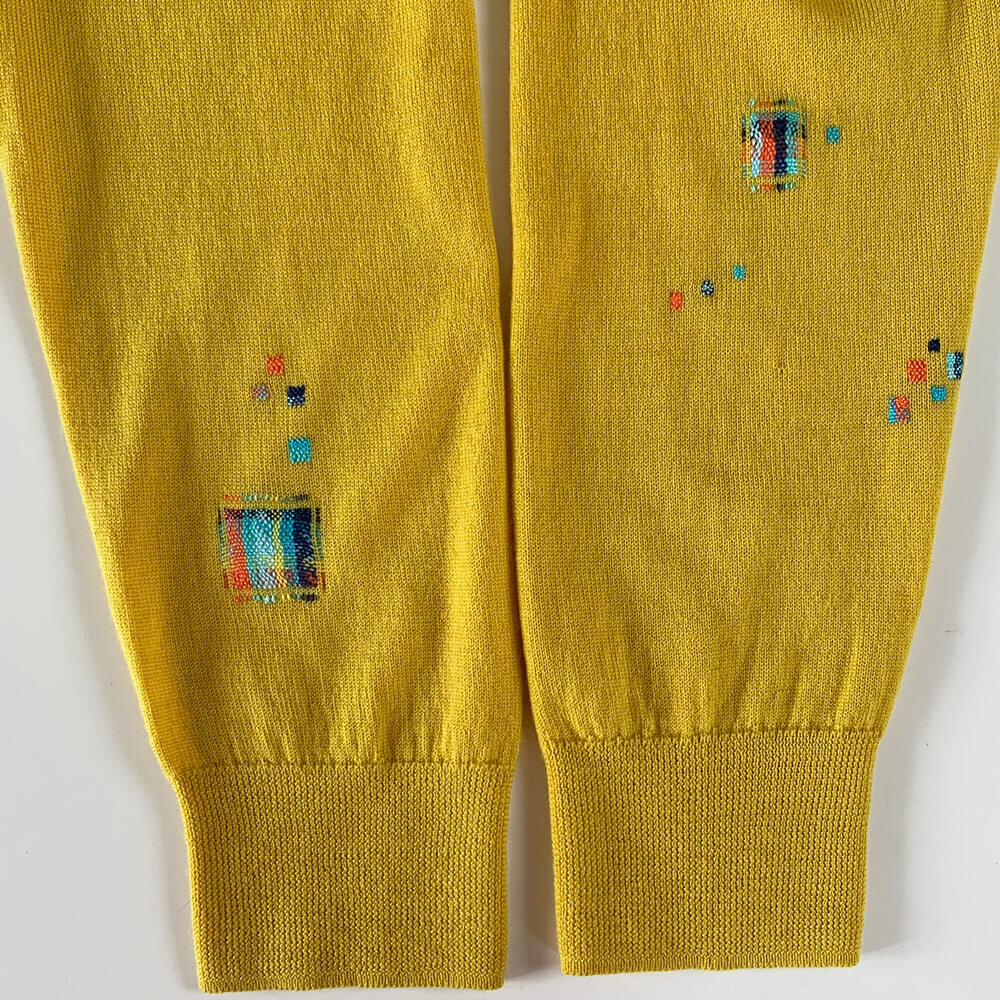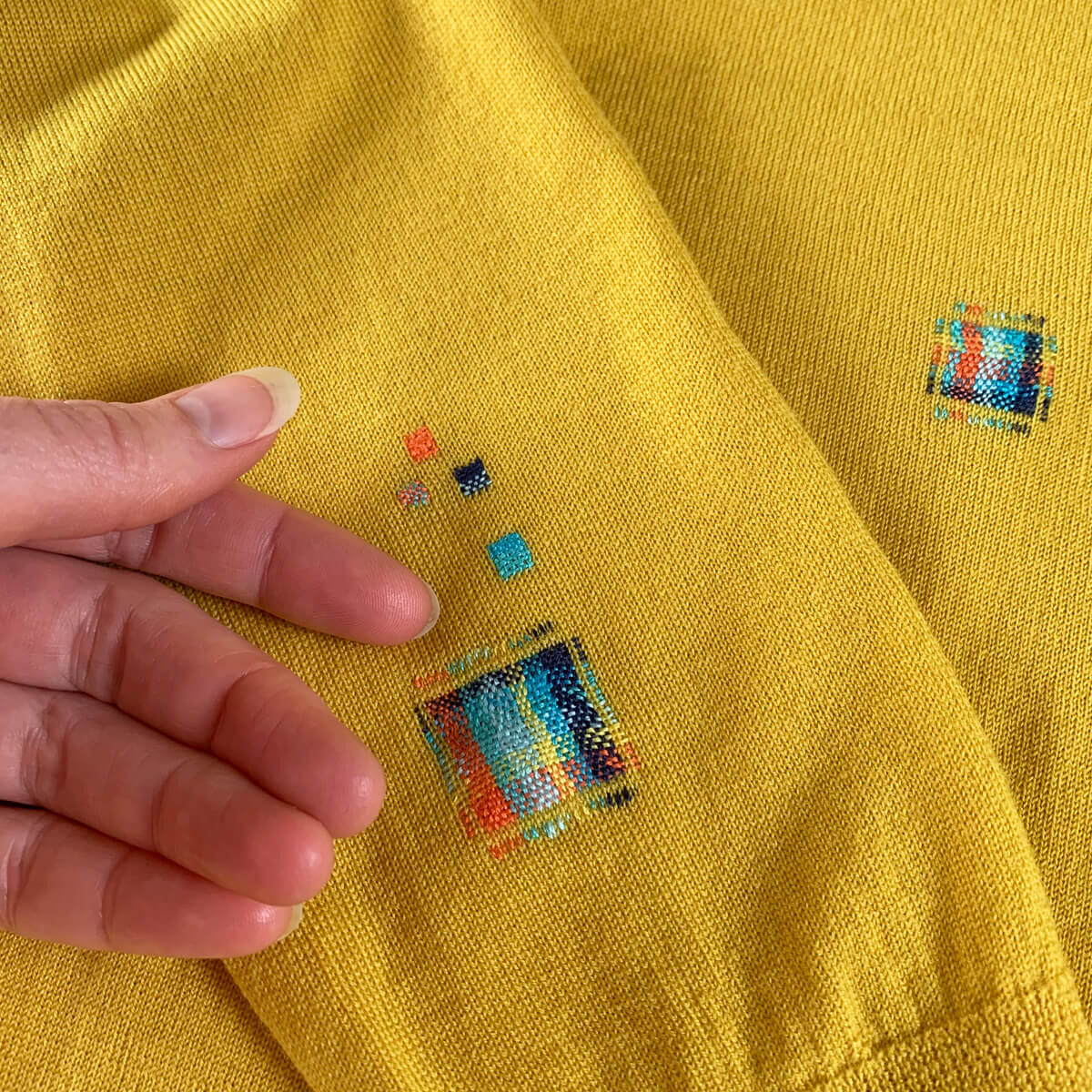Visible Creative Mending
I’ve been lucky enough to be sent several pieces to visibly mend over the last few months as part of my creative knitwear repair service, which have been a mix of fun and challenging projects for me.
I thought I’d share some of them, and tell you a little bit about them.
Darning a Cardigan
This yellow cardigan was a really fine knit merino piece, much loved by it’s owner, with a few smallish holes and some coffee stains. I didn’t actually have any wool fine enough to mend it with, so I used silk instead. I know I normally advocate matching fibre types if possible, but as I wasn’t able to, silk was a nice fit. I had colours that worked with the yellow, and the silk has a natural shine which is a beautiful contrast to wool.
I darned all the patches, as my client had picked out a previous darn of mine that she particularly liked, and I tried to create something similar.
Visibly Mending Worn Elbows
This piece is one of the most extensive repair jobs I’ve ever undertaken. As you can see from the before photo, the elbows of this cardigan were worn right down to the synthetic yarn that was mixed in with the wool. Possibly the only time I’ll forgive a blend like that- the synthetics will snag and potentially break from snagging, but otherwise they don’t wear out. Still not a good enough reason to essentially add plastics into clothing as far as I’m concerned though…!
Anyway, after discussing colours, I started reinforcing the worn areas using Swiss Darning. It was very time consuming (days), but the end result felt very sympathetic to the original piece.
I treat each repair as a small design project, considering how it looks at each stage. This takes extra time, as the damage and wear often dictates where I need to work, and that can affect how I work and design the mend.
If you need fine wool for darning, I have some available in a range of colours.
Creative Mending Process
The repair below is a great example of my creative mending process. This was a worn elbow of a fairly chunky sweater, and I used Swiss darning again to rebuild the fabric and reinforce the surrounding area.
I started working in squares, but they weren’t looking quite right to me, so I undid them and started again. The middle image will show you the next stage, but I decided the colours were too bright (my client was for a man, and I knew he only wanted a pop of colour) and so I undid the yellow and added more blues and greens. Visible mending is a creative process for me as well as a practical one, and it can sometimes take a while to work out exactly what feels right for a creative repair.
Below is an example of a much more subdued mend. This cardigan had worn through under the arms on the body and sleeve, but it had a lot of sentimental value to my client. As you can see, it was threadbare in places, and again, I’ve used Swiss darning to reinforce it. I found a yarn that was very similar in colour, so this is much less of a designed mend, and much more practical.
The issue with areas that are very worn can be that once you start looking, it’s very hard to stop working on them!
Creative Visible Mending
Whenever I have time and feel creative, I’ve been exploring pattern within my darning, and combining different techniques. I now have a new guide of further micro weaves, which will teach you a range of patterns, as well as how to vary them and get creative with them.
If you’re new to mending and would like to learn, my digital mending workshop is a great place to start, as it covers darning and using Swiss darning as reinforcement, with videos and step by step guides, as well as some micro weaves. Plenty to get you creative, and there’s the option of having materials sent out to you.














